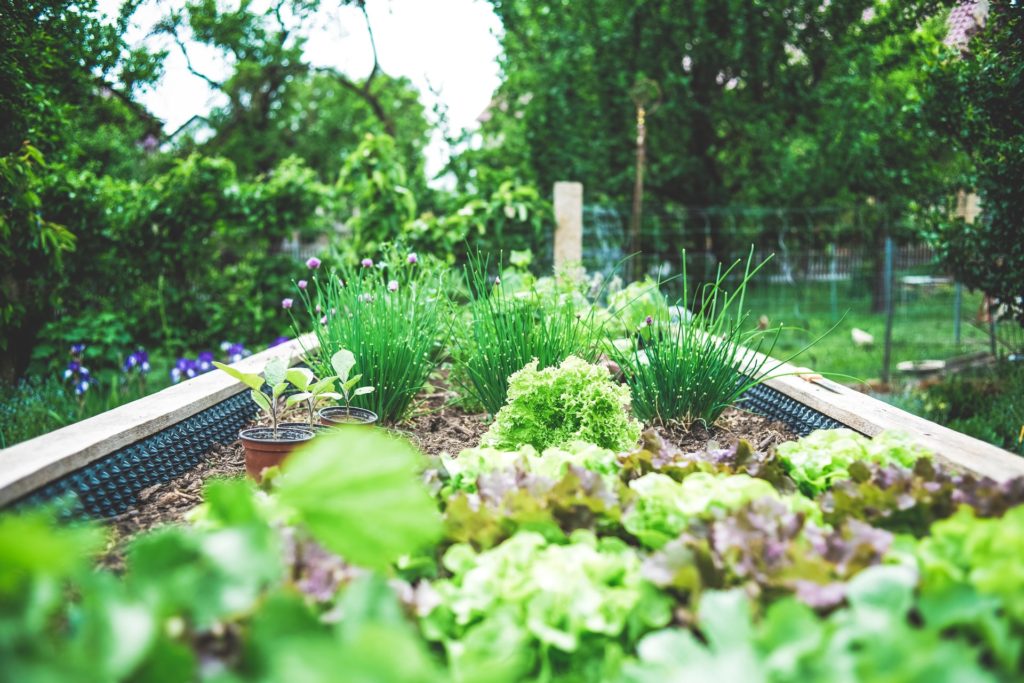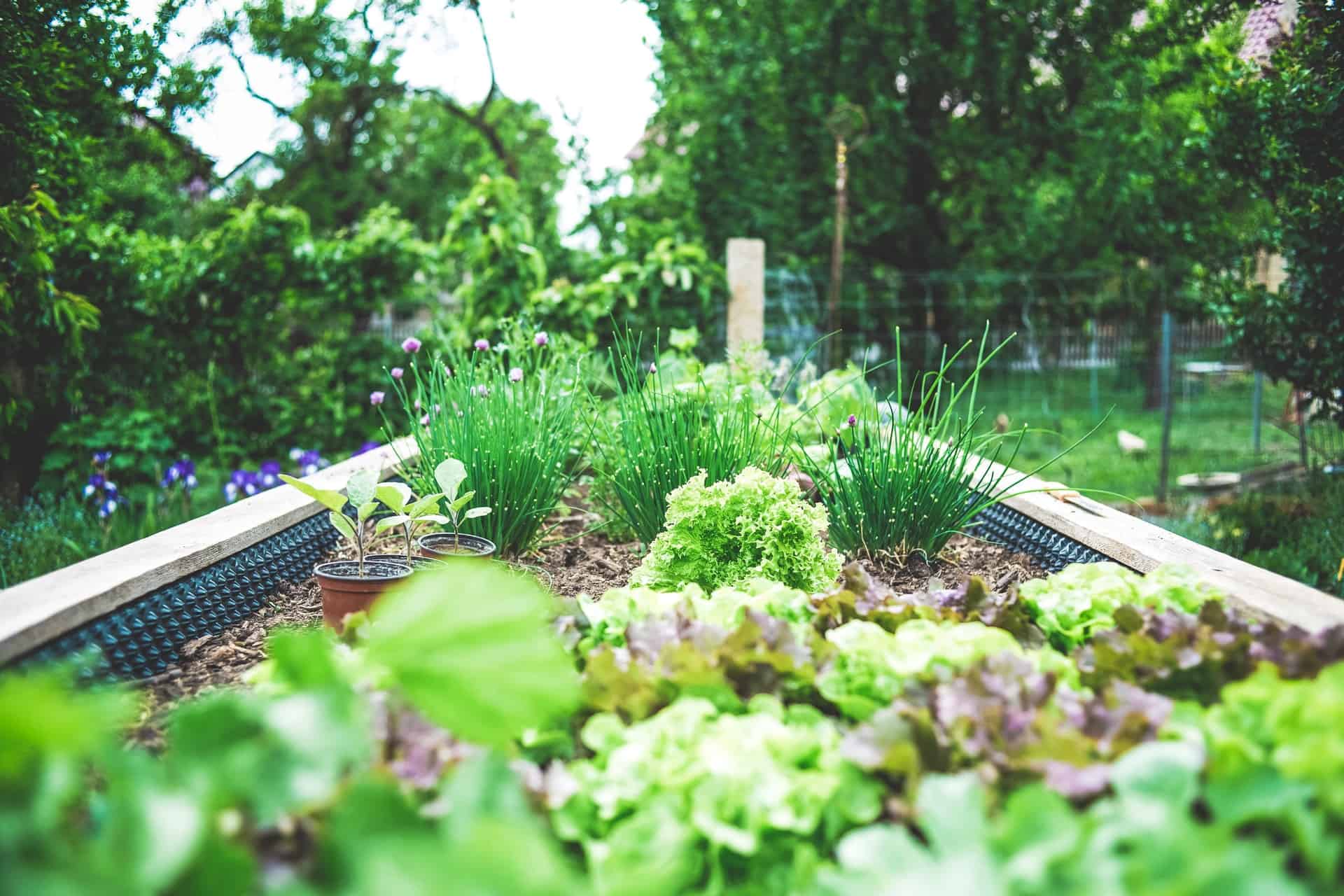
Plants, like people, have pretty definite ideas about where they like to live. Like us, they flourish in congenial conditions and become weak and dispirited if life is too difficult or uncomfortable for them.
Unlike people, however, plants can’t take practical steps to improve their surroundings — they can’t up and move, and they can’t protect themselves against adverse conditions.
You, the gardener, are largely responsible for how well your plants do in the climatic conditions you offer them, and you’ll save yourself a lot of frustration and disappointment if you have some understanding of how climate affects your garden and if you choose the vegetables to plant according to your climate.
What is a Growing Season?
The first order of business is to define terms. A growing season is, essentially, the length of time your area can give plants the conditions they need to reach maturity and produce a crop.
The growing season is measured in terms of the number of days between the last frost in spring and the first frost in fall. In general, these two dates mark the beginning and end of the time in which plants grow from seed to maturity.
Some areas never have frost at all and use their dry season as their “winter.”
In these areas, however, it’s still possible to use hypothetical “frost” dates. So the length of your growing season is (technically) totally dependent on your local climate.
When you plant a vegetable depends on how well that vegetable handles extremes of temperature.
Reference Points for Planning and Planting Vegetables
The dates on which a certain area can expect to have the last spring frost and the first fall frost are called the “average date of last frost” and the “average date of first frost,” respectively.
They’re generally used as reference points for planning and planting vegetables, but they’re not infallible.
They do however give you a fairly accurate guide as to which vegetables will do best in your area, and they are the reference points most generally used in this book. As with every other aspect of gardening, you need to be a little bit flexible.
The chart below lists the average dates of first and last frosts in major cities throughout the United States. If you live within 10 miles of a city listed, you can take these dates as accurate; three or four days either way is just as acceptable, so don’t feel you must do all your planting exactly on the one listed day.
All these dates are average and the weather can always spring surprises. If you live a long way from a listed city or are for any reason unsure when to plant, call your local Cooperative Extension Service or Weather Bureau for advice.
The Cooperative Extension Service is a joint effort of the United States Department of Agriculture and the state land-grant colleges and universities. The service’s local office is an invaluable resource for the gardener, and we’ve provided a list of offices throughout the country here. (appears he in Part 4.)
Climatic or “Hardiness” Zones
The average date of last frost is not the only reference point used to determine when to plant a garden. At one time or other, gardeners have made that date dependent on everything from “climatic zones” to the phases of the moon.
Climatic zones are the small maps you find on the back of seed packages; they divide the United States into zones or areas with fairly similar climates. They’re probably far more accurate references for planting than phases of the moon, but they’re very general, and they don’t tell the whole story.
There are many incidental — sometimes almost accidental — conditions that can cause changes in climate within a climatic zone. The climatic zone map in the seed catalog or on the back of a seed packet can give you a broad idea of how a vegetable (or vegetable variety, because carrots, tomatoes, and other popular vegetables don’t by any means conform to a stereotype) will do in your area.
Climatic zones, however, don’t take into account the variations that occur within an area which, if you go by the book, has the same climatic conditions prevailing over many square miles.
For instance, if the balcony of your downtown apartment faces south, you may be able to grow vegetables on it that would never survive in a north-facing garden of your apartment block.
Lots of large buildings, a nearby body of water like a lake, or even heavy traffic can significantly alter the temperature (and pollution level) in a small garden. So, given all these imponderables, it’s safer to judge how well a vegetable will grow by considering its own tolerance to certain conditions, rather than by a hard-and-fast map reference.
How “Hardiness” Affects Your Garden Plan
The way a vegetable type reacts to climatic conditions — heat, cold, moisture, and so on — determines its “hardiness.”
It’s another way of saying how tough it is, but the term hardiness is used specifically to indicate how well a plant tolerates cold. Before you study how climate affects your garden, it’s as well to consider which hardiness categories certain vegetables fall into.
The hardiness of each kind determines how that particular vegetable will fit into your growing season. The vegetables that are grown in a home vegetable garden fall into one of four hardiness categories:
- Hardy
- Very Hardy
- Tender
- Very Tender
The date on which you can safely plant each vegetable in your garden depends on which hardiness category it falls into.
Hardy
These vegetables can handle a certain amount of cold and frost and can be planted two to three weeks before the average date of last frost. They include beets, cardoon, carrots, celeriac, celery, chard, chicory, dandelion, endive, parsnips, Irish potatoes, radishes, salsify, turnips; and the herbs anise, borage, fennel, marjoram, oregano, parsley, rosemary, and savory.
Very Hardy
These vegetables can tolerate cold and frost and can be planted in the garden four to six weeks before the average date of last frost. They include asparagus, broccoli, Brussels sprouts, cabbage, cauliflower, collards, Chinese cabbage, horseradish, Jerusalem artichokes, kale, kohlrabi, leeks, lettuce, onions, peas, rhubarb, rutabagas, and shallots; and the herbs chives, garlic, mint, tarragon and thyme.
Tender
These vegetables don’t like cold weather and can be planted on the average date of last frost; you will need to protect them in some way if there’s a late frost. These include most beans, cress, mustard, sorrel, corn, tomatoes; the perennial artichokes; and the herbs basil, caraway, chervil, coriander, dill, sage, and sesame.
Very Tender
These vegetables will not survive any frost and must be planted after the soil has warmed up in the spring. They can be planted two to three weeks after the average date of last frost. These include lima beans, cucumbers, eggplant, muskmelons, okra, peanuts, peppers, pumpkins, winter and summer squash, and watermelons.
Gamblers can take a chance and plant earlier than these dates, but usually this gambling will not pay off. Even if you beat the odds and your plants are not frozen out, they’ll probably be inhibited by the cold soil, and they won’t grow any faster than they would if you planted them at the proper time.
How Temperature and Rainfall Affects Your Garden
The degree to which the successful growing of each vegetable type is dependent on hot and cold weather conditions indicates that temperature is the most important aspect of climate to consider when you’re planning your vegetable garden.
At this point it’s helpful to take a good look at how temperature and other basic climatic conditions affect your garden.
Rainfall also play a most important part in how your garden grows, so let’s take a look at these two elements and how they work with your plants.
How Temperature Affects Plant Growth
Temperatures, both high and low, affect growth, flowering, pollination, and the development of fruits. If the temperature is too high or too low, leafy crops may be forced to flower prematurely without producing the desired edible foliage.
This early flowering is called “going to seed,” and affects crops like cabbages and lettuce. If the night temperatures get too cool it may cause fruiting crops to drop their flowers — reducing yields considerably; peppers may react this way to cold weather.
Generally, the ideal temperatures for vegetable plant growth are between 40° and 85°F.
At warmer temperatures the plant’s growth will increase, but this growth may not be sound structural growth. At lower temperatures the plant’s growth will slow down or stop altogether.
Cool Season and Warm Season Vegetables
Vegetables have different temperature preferences and tolerances and are usually classified as either cool-season crops or warm-season crops.
Cool-season crops are those like cabbages, lettuce, and peas, which must have time to mature before the weather gets too warm — otherwise they will wilt, die, or go to seed prematurely. These vegetables can be started in warm weather only if there will be a long enough stretch of cool weather in the fall to allow the crop to mature before the first freeze.
Warm season crops are those vegetables that can’t tolerate frost, like peppers, cucumbers, and melons. If the weather gets too cool they may not grow at all; if they do grow, yields will be reduced.
Warm-season crops often have larger plants than cool-season crops and have larger, deeper root systems that enable them to go for relatively longer periods without being watered.
Even though it’s convenient to think of vegetables simply as either cool-season or warm-season crops, considerable differences can exist within each of these two groups. The following lists offer a guide to cool- and warm-season crops.
Cool Season Vegetables
Globe artichokes, asparagus, beets, broad beans, broccoli, Brussels sprouts, cabbage, carrots, cauliflower, celeriac, celery, chard, chicory, Chinese cabbage, collards, cress, dandelion, endive, cardoon, horseradish, Jerusalem artichokes, kale, kohlrabi, leeks, lentils, lettuce, onions, parsnips, sweet peas, white potatoes, radishes, rhubarb, rutabagas, salsify, shallots, sorrel, spinach, turnips
Cool Season Herbs
Anise, borage, chive, dill, oregano, parsley, peppermint, rosemary, sage, savory, spearmint, tarragon, and thyme. Included among the warm-season vegetables are: dry beans, lima beans, mung beans, snap or green beans, chayote, chick peas, corn, cucumbers, eggplant, muskmelons, mustard, okra, black-eyed peas, peanuts, peppers, sweet potatoes, pumpkins, soybeans. New Zealand spinach, summer squash, winter squash, tomatoes, and watermelons. Warm-season herbs include: basil, caraway, chervil, coriander, marjoram, and sesame
Rainfall: How Your Plants Use Water
The amount and timing of the rainfall in your area also affects how your vegetables grow. Too much rain at one time can wash away seeds or young seedlings and damage or even kill mature plants.
A constant rain when certain plants are flowering can reduce the pollination of the flowers and reduce yields. This can happen to tomatoes, peppers, beans, eggplant, melons, pumpkins, and both summer and winter squash.
A constant rain can also tempt the honeybees to stay in their hives instead of pollinating the plants; again, yields will be affected. Too little rain over a period of time can slow down plant growth and kill young seedlings or even mature plants.
Limited moisture in the air can also inhibit pollination and reduce the yields of some vegetables.
Too little rain can be more easily remedied than too much. If it rains too little, you can water the garden. If it rains too much, all you can do is pray.
Rainfall is probably the easiest climatic condition to improve. Farmers have worried and complained about the rainfall since the beginning of agriculture.
If you’ve got thousands of acres of land and no control over the available water it can be very frustrating — if not a disaster.
We home gardeners don’t have to worry about those things. If you don’t get enough rain when you need it, you can simply water, and there are many different methods you can use. [These are described in detail in “Caring for Your Garden.”]
Too much rain can be more difficult to handle and here you need to take preventive measures. The better drained your soil is, the better it will be able to deal with too much water.
When you select the site for your garden, avoid any area that is low-lying or poorly drained. If that’s the only site that you have for the garden — and you’re really serious about gardening — you can improve it by installing drainage tiles.
This can be a costly and complicated process, so consider it only as a last resort.
Final Thoughts
When you plan your garden, it’s so important to understand your environment — the world your plants will live in and, we hope, thrive. Know you’re growing season. Just know that the growing season will be different depending on the climate zone — and their corresponding temperatures and rainfall — in which you live. That, in turn, will most certainly affect the which vegetables and herbs you should plant in your garden—and when.


